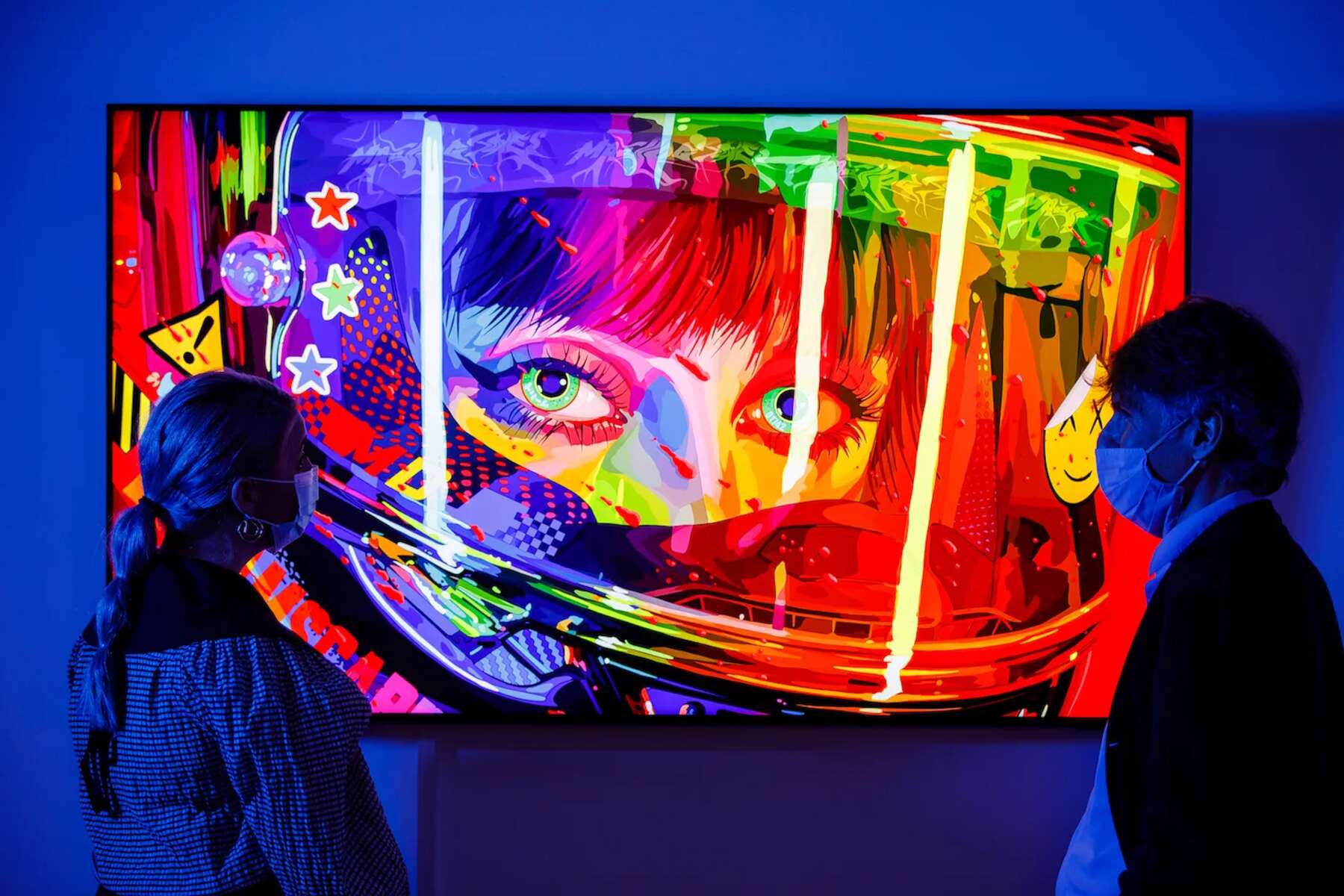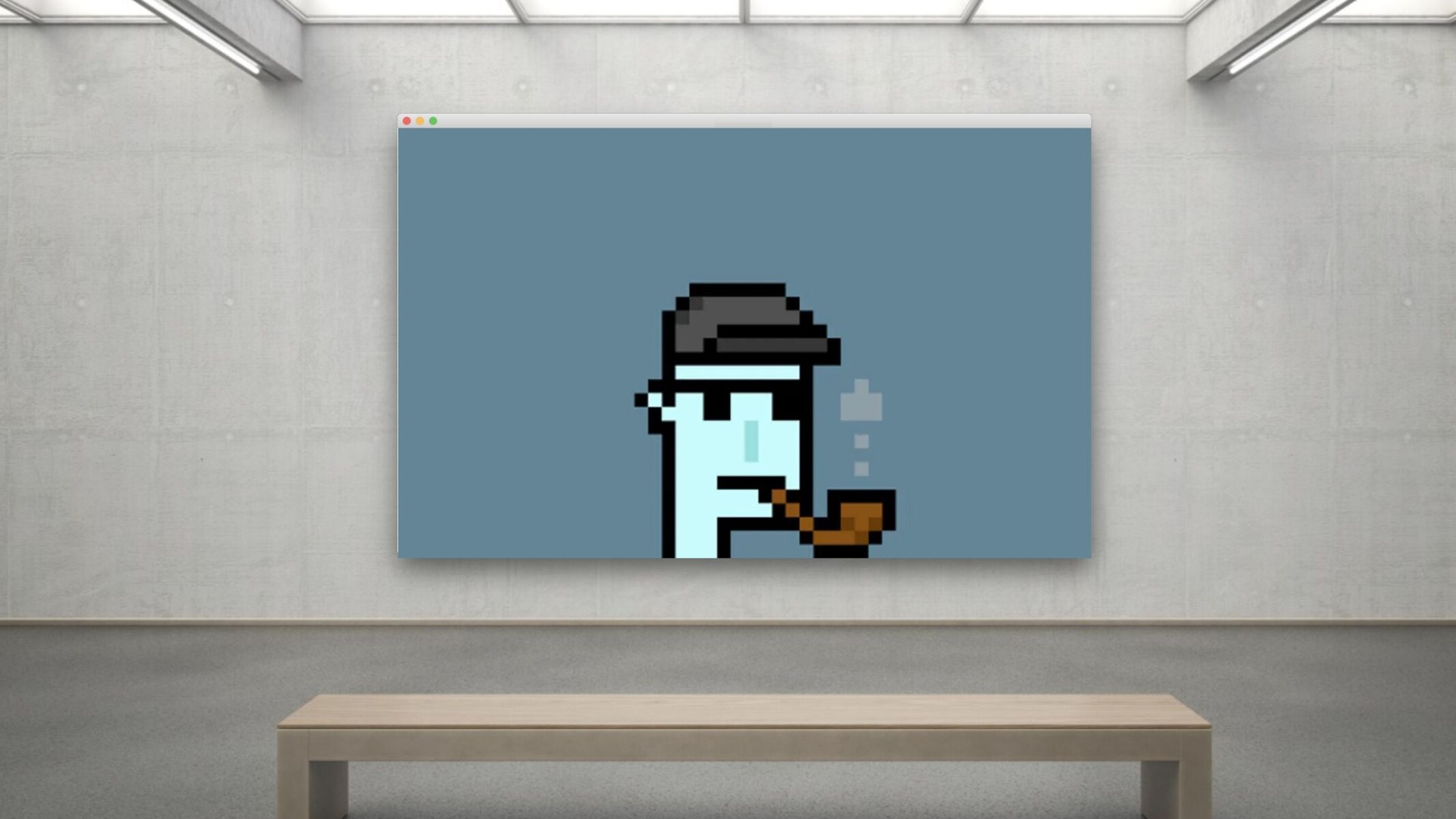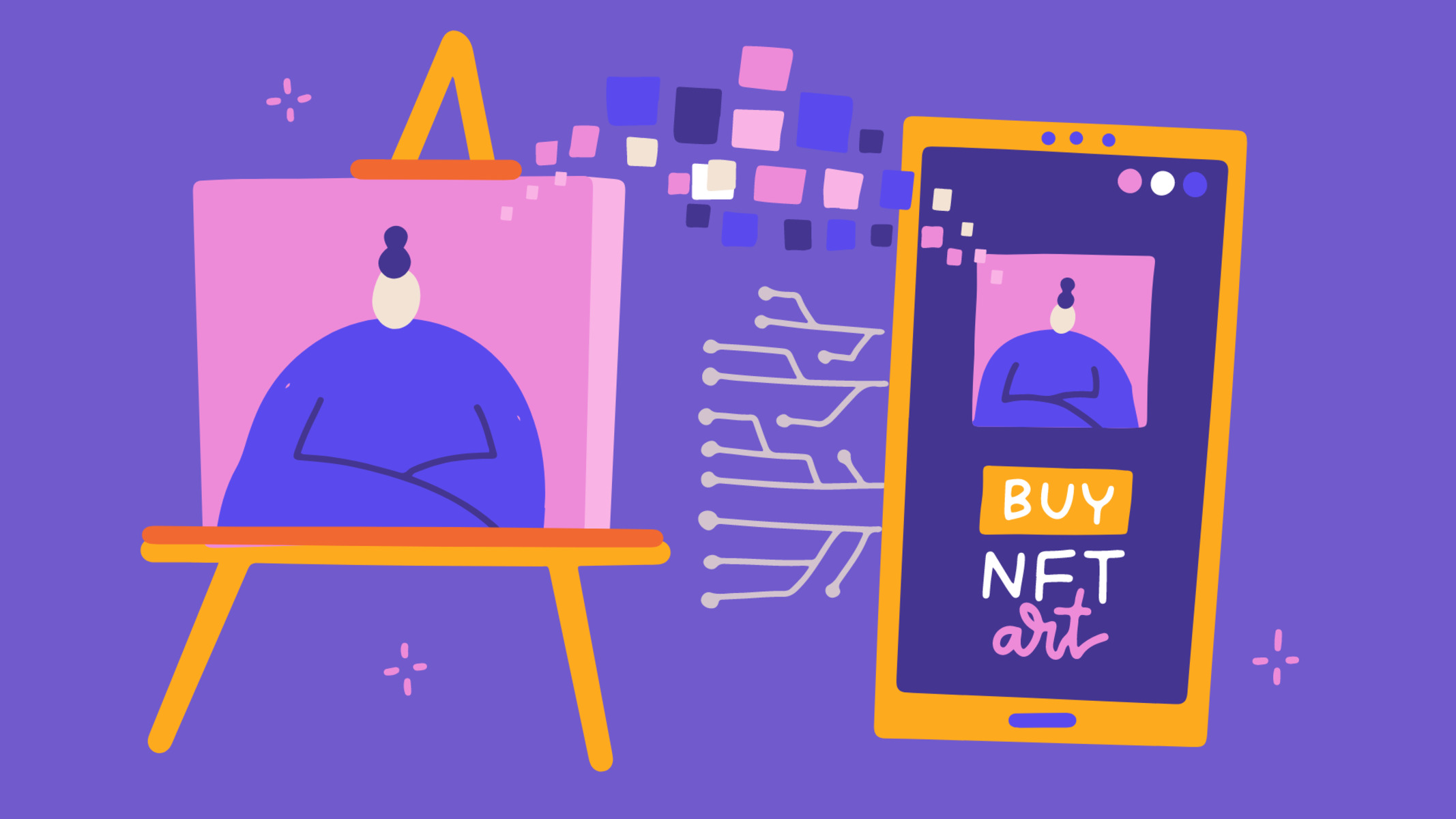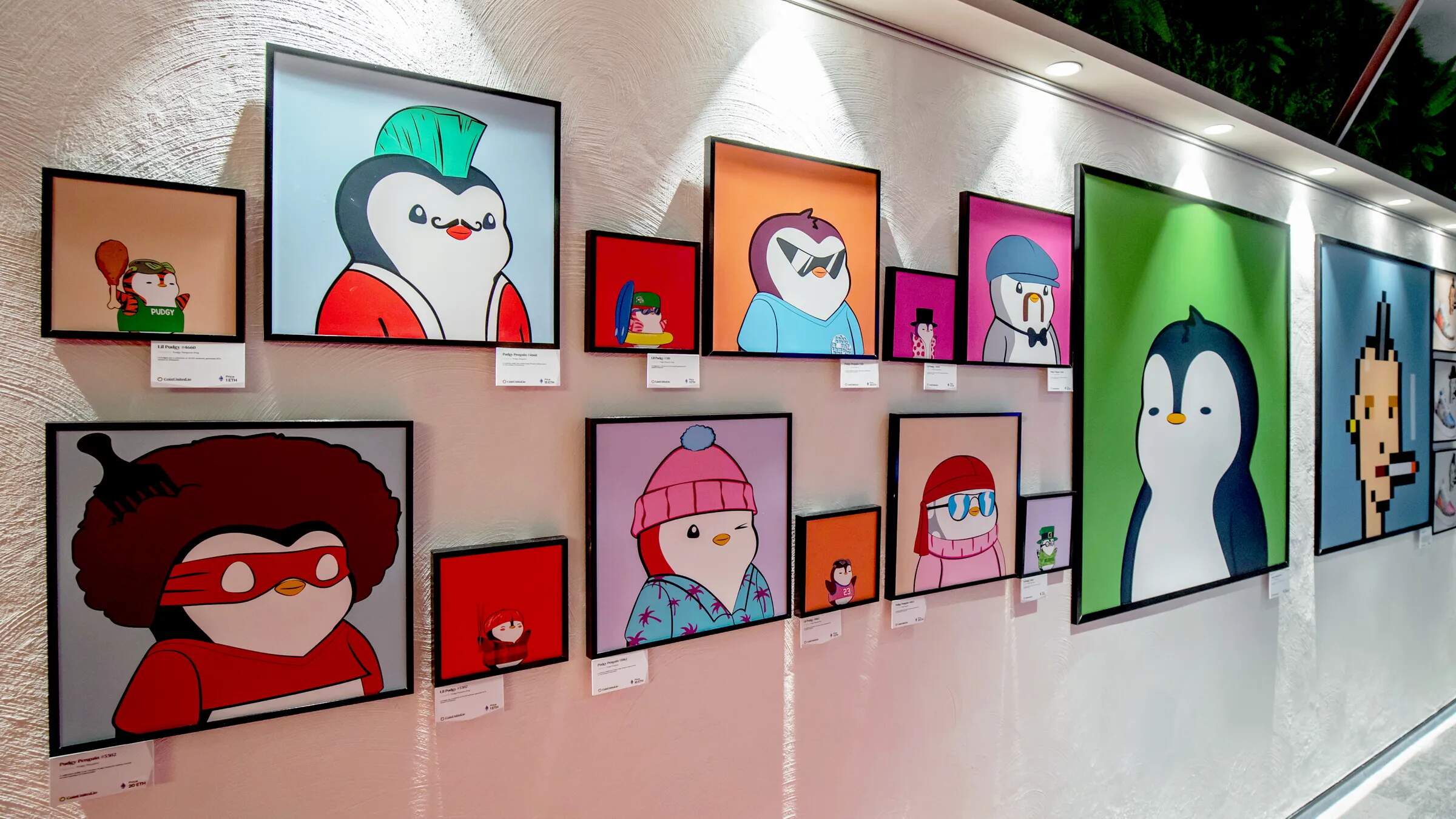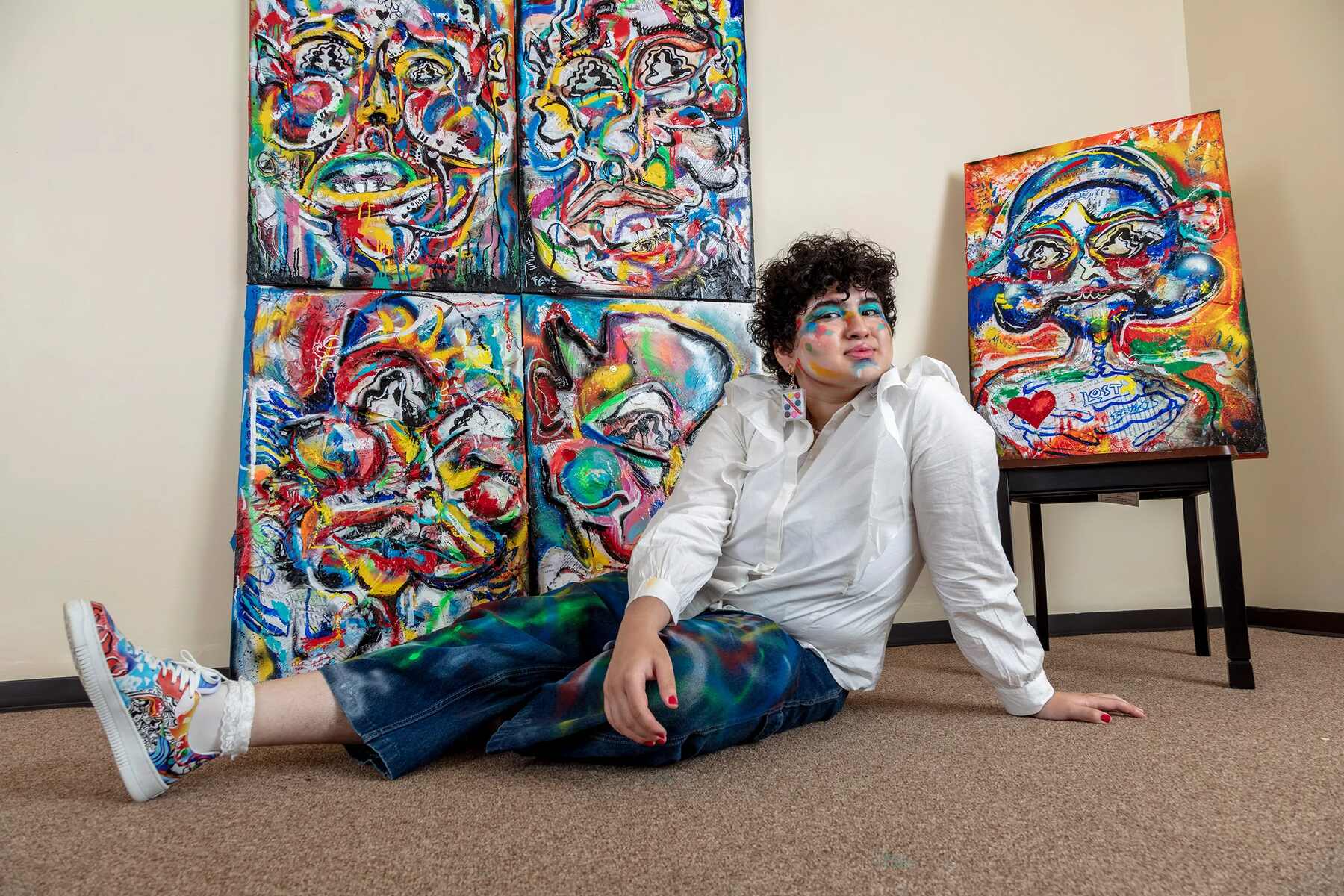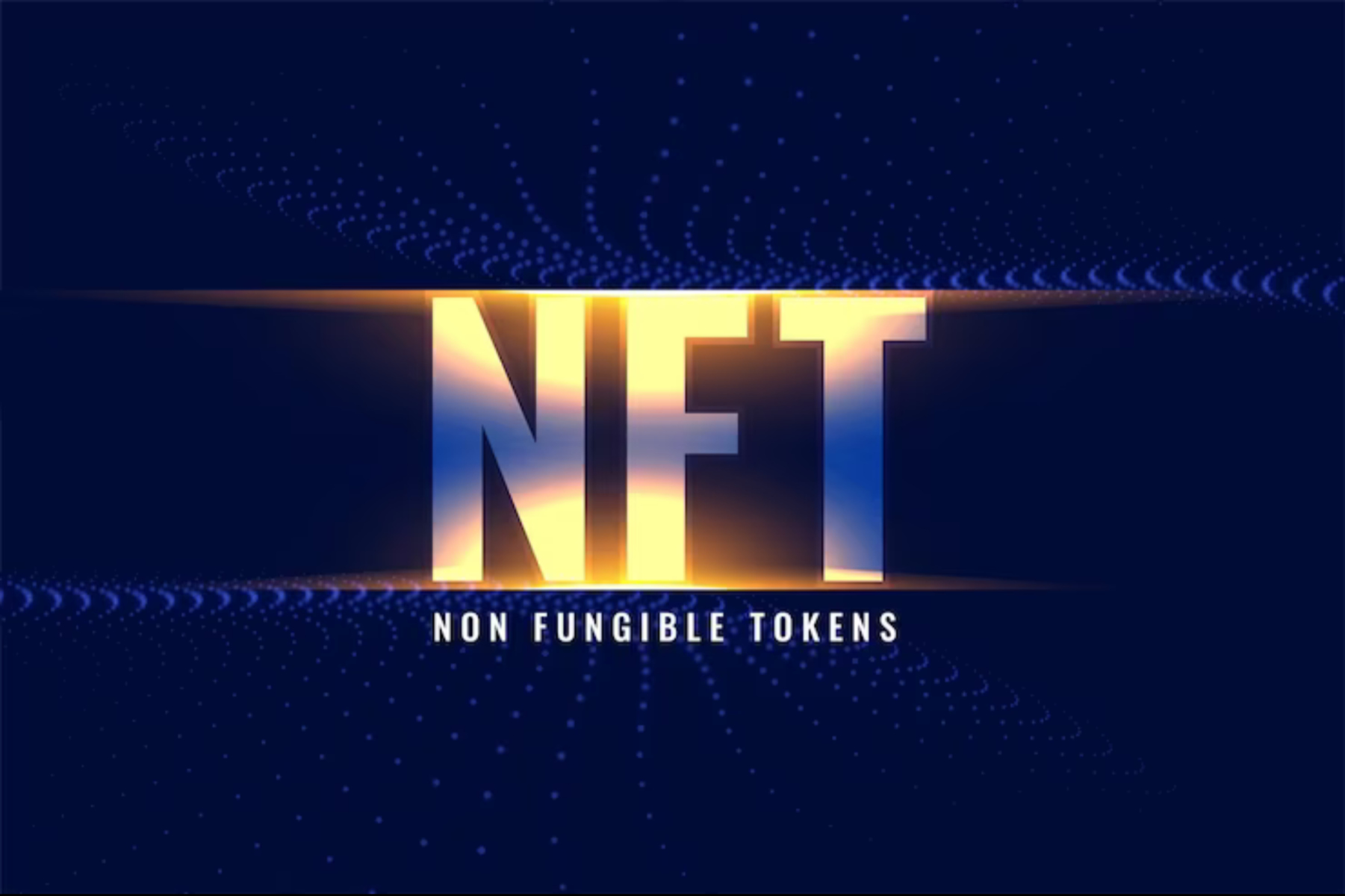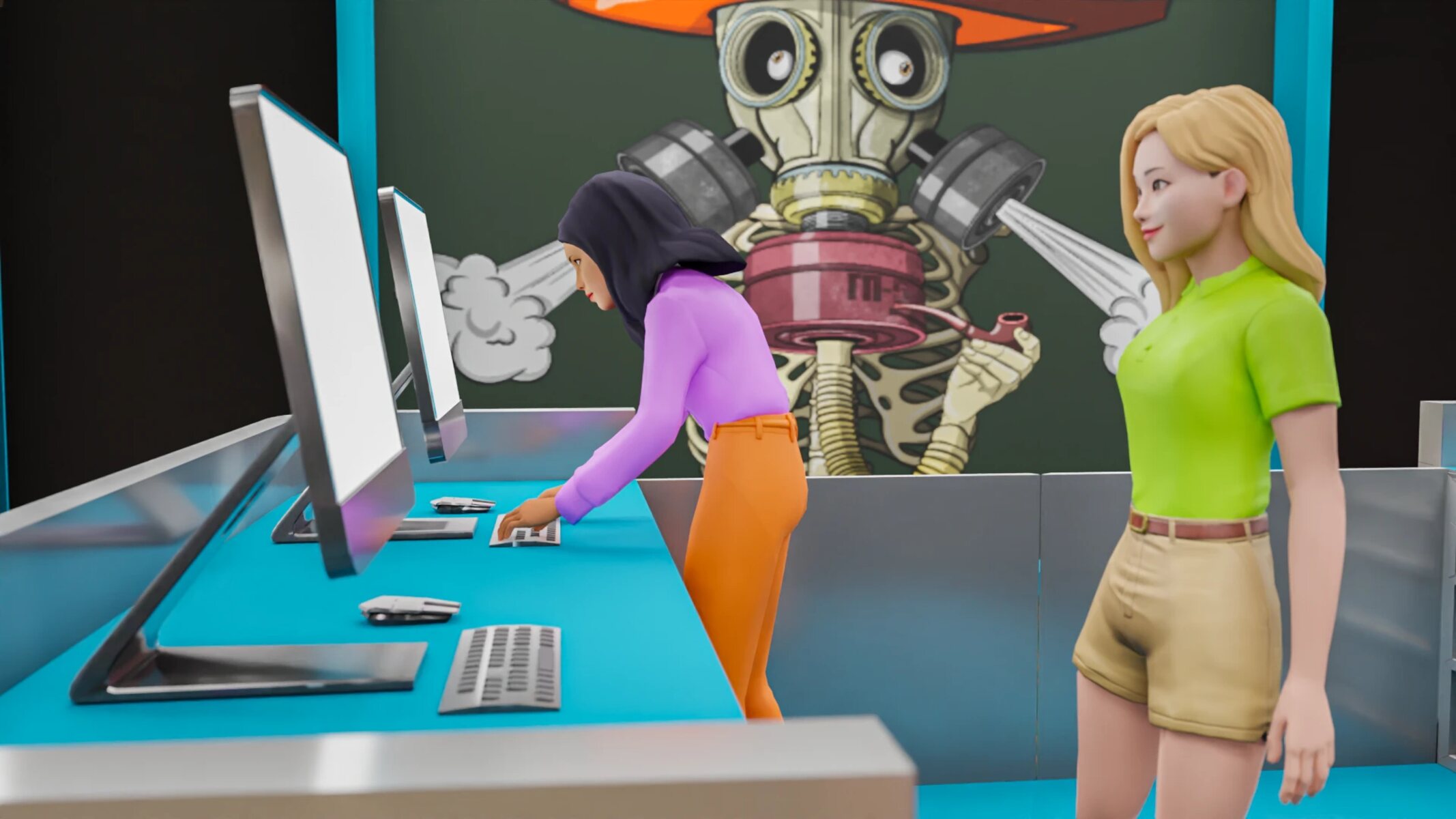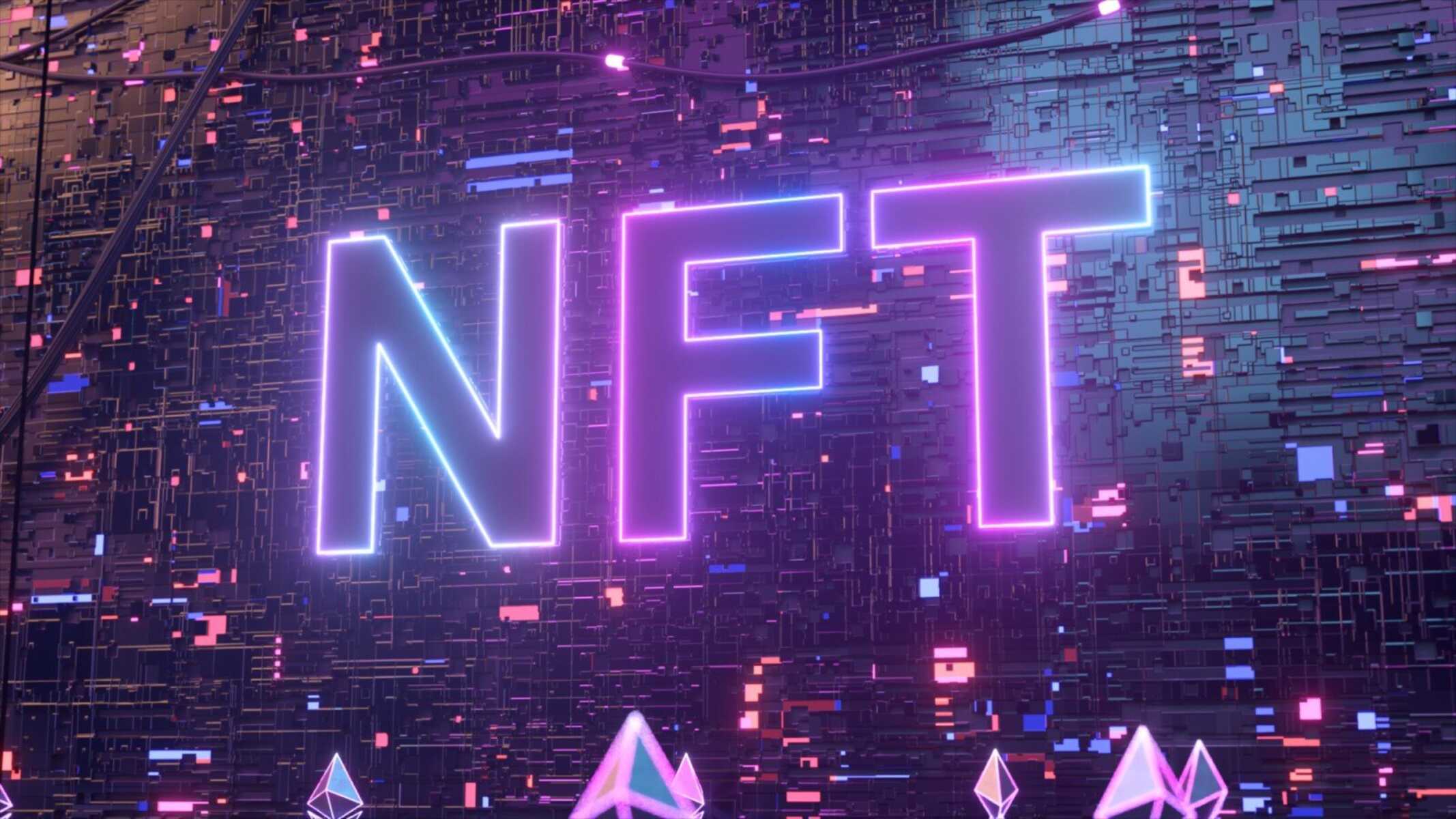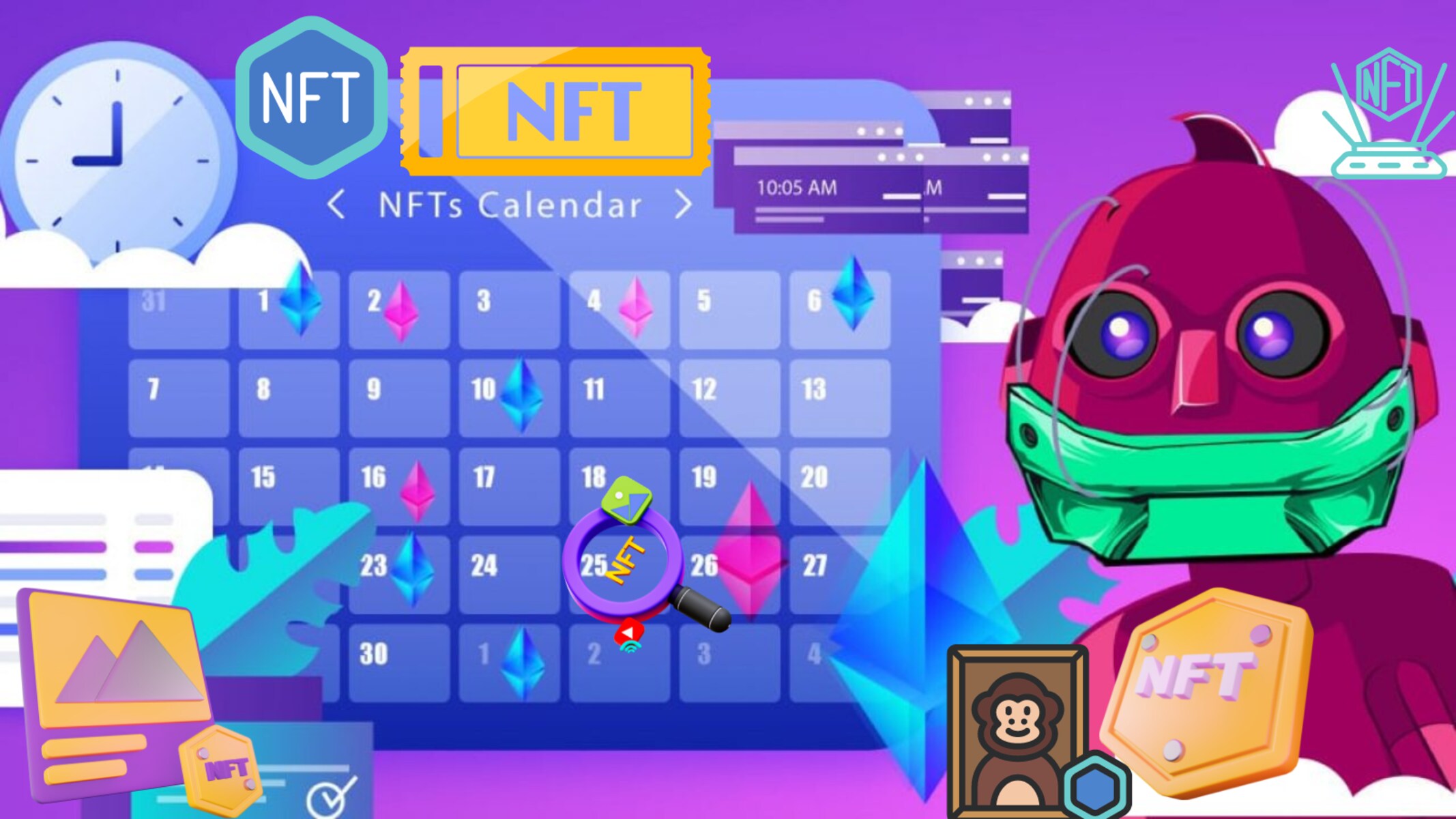Introduction
Welcome to the digital art revolution! The world of art is constantly evolving, embracing new technologies and methods of creation and distribution. One such innovation that has been making waves in the art world is the concept of Non-Fungible Tokens (NFTs). But what exactly are NFTs and how are they impacting the art industry?
NFTs have gained immense popularity in recent years, revolutionizing the way we buy, sell, and collect digital art. An NFT represents a unique digital asset that is stored on a blockchain, which serves as a digital ledger, providing proof of ownership and authenticity. Unlike cryptocurrencies such as Bitcoin or Ethereum, NFTs are indivisible and cannot be exchanged like-for-like.
So, why are NFTs creating such a buzz in the art world? One of the main reasons is their role in addressing the long-standing issue of digital art ownership and provenance. In the past, digital artworks could easily be duplicated, shared, and distributed without any way to distinguish the original from the copies. This undermined the value and collectability of digital art. However, with the advent of NFTs, artists and collectors now have a way to establish and sell unique digital assets, giving them true ownership and the ability to monetize their work.
Additionally, NFTs have introduced a new level of scarcity to digital art. Each NFT has a unique identifier, making it one-of-a-kind and impossible to replicate. This scarcity has intrinsic value and has created a sense of exclusivity and rarity in the digital art market. Collectors are now able to own a piece of art that can be authenticated and cannot be duplicated easily.
Moreover, the blockchain technology behind NFTs has solved the issue of provenance. Each transaction involving an NFT is permanently recorded on the blockchain, creating an immutable and transparent ownership history. This not only provides artists with a secure way to protect their intellectual property rights but also gives collectors confidence in the authenticity and originality of their purchased art pieces.
However, while NFTs offer exciting opportunities for artists and collectors, they are not without their challenges and criticisms. In the next sections, we will delve deeper into how NFTs work, their advantages, challenges, and their potential impact on the art world. Let’s explore this new frontier of digital art ownership!
Definition of NFT
Before diving into the intricacies of NFTs, let’s start with a clear definition. Non-Fungible Tokens (NFTs) are unique digital assets that are stored on a blockchain, typically using the Ethereum blockchain. The term “non-fungible” means that each NFT has distinct characteristics, making it different and irreplaceable. In other words, NFTs are not mutually interchangeable like cryptocurrencies.
NFTs can represent a wide range of digital and physical items, including artwork, music, videos, collectibles, virtual real estate, and more. These tokens are created using smart contracts, which are self-executing contracts with the terms of the agreement directly written into the code.
What sets NFTs apart from other digital assets is their ability to provide proof of ownership, authenticity, and scarcity. The ownership of an NFT is recorded on the blockchain, making it easy to verify the true owner of the asset. Additionally, the blockchain ensures that each NFT is unique and cannot be duplicated or forged. This aspect of scarcity adds value to the NFT, as collectors are willing to pay a premium for exclusive ownership of a digital asset.
In terms of functionality, NFTs are programmable tokens, allowing creators to embed certain characteristics or properties into the token itself. For example, an NFT artwork might have additional features such as unlockable content, limited edition designs, or even the ability to receive royalties whenever the artwork is resold.
It’s essential to note that owning an NFT does not necessarily equate to owning the copyright or intellectual property rights of the underlying asset. The ownership of the NFT signifies the ownership of a unique digital representation or tokenized version of the asset, but the copyright or licensing rights may still belong to the original creator.
With the rise of NFTs, artists and creators now have the opportunity to tokenize their work, granting them greater control and monetization options in the digital realm. Likewise, collectors can acquire digital assets with provable ownership, adding value to their collections.
In the next sections, we will explore how NFTs function, their advantages, challenges, and their impact on the art industry. Let’s delve deeper into the fascinating world of NFTs and their revolutionary potential in the world of digital assets.
How NFTs Work
To understand how Non-Fungible Tokens (NFTs) work, let’s dive into the technical aspects behind them. NFTs are built using blockchain technology, with the Ethereum blockchain being the most commonly used platform for creating and trading NFTs.
At its core, a blockchain is a decentralized and transparent digital ledger that records transactions across multiple computers. Each transaction is bundled together and added to a “block,” which is then linked to previous blocks, forming a chain of information. This ensures the immutability and transparency of the recorded data.
When an artist or creator wants to create an NFT, they typically use a marketplace or platform to mint the token. Minting refers to the process of creating a unique token and assigning the desired properties and metadata to it. The metadata can include details such as the name of the artwork, the artist’s name, a description, and even embedded media or unlockable content.
Once the NFT is minted, it is assigned a unique identifier or token ID that distinguishes it from other tokens on the blockchain. This identifier serves as a digital certificate of authenticity, establishing the uniqueness and provenance of the asset.
When an NFT is bought or sold, the transaction is recorded on the blockchain, along with information about the buyer and seller. This creates a transparent and permanent record of ownership, making it easy to verify the current owner of the NFT.
One key aspect of NFTs is their programmability. Smart contracts, which are self-executing contracts with predefined terms, are used to imbue NFTs with certain functionalities. These smart contracts dictate how the NFT can be used, whether it can be resold, if it has unlockable content, or if the original creator will receive royalties from future sales. This programmability allows for greater flexibility and innovation in the world of digital assets.
To store and manage NFTs, users typically utilize digital wallets that are compatible with the blockchain platform hosting the NFT. These wallets provide a secure and convenient way to store, transfer, and manage NFTs. They also allow users to view their NFT collections and explore the wider marketplace.
It’s important to note that the environmental impact of NFTs, particularly on the Ethereum blockchain, has sparked discussion and criticism due to the significant energy consumption involved in the mining and transaction validation process. However, efforts are being made to address these concerns and explore alternative solutions, such as utilizing more energy-efficient blockchain platforms.
In summary, NFTs leverage blockchain technology to create unique and indivisible digital assets. They provide proof of ownership, authenticity, and scarcity for these assets, revolutionizing the concept of digital ownership. The programmability of NFTs allows for innovative features and functionality, while digital wallets serve as a secure means of storage and management. With a basic understanding of how NFTs work, let’s explore the advantages, challenges, and impact of NFTs in the art industry in the following sections.
Advantages of NFT in Art
Non-Fungible Tokens (NFTs) have introduced several significant advantages to the art industry, revolutionizing the way artists create, sell, and monetize their work. Let’s explore some of the key advantages of NFTs in art.
1. Establishing Ownership and Authenticity: One of the most significant advantages of NFTs in art is their ability to establish ownership and prove the authenticity of digital assets. With the blockchain serving as a transparent and immutable ledger, collectors have verifiable proof that they own an original piece of art. This combats the issue of digital art piracy and ensures artists receive proper credit and compensation for their work.
2. Monetization Opportunities: NFTs have opened up new avenues for artists to monetize their creations. Through the sale of digital art as NFTs, artists can receive direct royalties whenever their work is resold. This provides ongoing income and incentives for artists to continue producing innovative and valuable art.
3. Accessibility and Reach: NFTs have democratized the art world, making it more accessible to a wider audience. Previously, physical artworks were limited in their reach, requiring gallery exhibitions or auctions for exposure. But with NFTs, artists can instantly share their work with anyone in the world through online marketplaces. This global accessibility allows artists to connect with a larger audience and potentially increase their recognition and influence.
4. Creative Control: NFTs grant artists more control over their work. They can dictate the terms and conditions of the sales and ownership of their art. Additionally, artists can embed unlockable content, limited editions, or other unique features within the NFT, adding value and exclusivity to the digital asset.
5. Revitalizing Digital Art: Digital artists have long faced challenges regarding the ownership and value of their work. NFTs provide a solution by creating a provable and tradeable digital asset. This has revitalized the digital art market, attracting both artists and collectors to explore and invest in this emerging medium.
6. Reduced Middlemen and Costs: With traditional art sales, intermediaries such as galleries and auction houses would typically take a significant portion of the revenue generated. However, with NFTs, artists can directly sell their work to buyers, eliminating the need for intermediaries and reducing associated costs. This enables artists to retain a larger portion of their earnings, increasing their financial independence.
The advantages of NFTs in the art industry are substantial, providing artists with new opportunities for monetization, creative control, and global recognition. Collectors also benefit from the ability to authenticate and own unique digital assets. However, along with these advantages come challenges and criticisms, which we will explore in the following section.
Challenges and Criticisms of NFTs in Art
While Non-Fungible Tokens (NFTs) have brought numerous advancements to the art industry, they are not without their challenges and criticisms. Let’s delve into some of the main concerns surrounding NFTs in the art world.
1. Environmental Impact: One of the most notable criticisms of NFTs is their environmental footprint. NFTs, especially those built on the Ethereum blockchain, consume a significant amount of energy due to the mining and transaction validation process. This has raised concerns about the carbon footprint and sustainability of NFTs, leading to discussions and efforts to explore more energy-efficient blockchain technologies.
2. Artistic Value and Intangibility: Critics argue that the primary value of art lies in its cultural and artistic significance, rather than its scarcity or tokenized nature. Some believe that NFTs prioritize the financial aspect of art, potentially diminishing the importance of the artwork itself. Additionally, the intangibility of digital art poses a challenge for traditional art enthusiasts who associate value with physical presence and tactility.
3. Market Volatility and Bubble Concerns: The rapid rise in popularity of NFTs has led to concerns about market volatility and the potential formation of an art bubble. While NFTs have facilitated the sale of artworks for significant sums, there is skepticism around the sustainability of these valuations and the possibility of a market correction in the future.
4. Copyright and Intellectual Property: Although NFTs establish a mechanism for provenance and ownership of digital assets, they do not inherently address copyright and intellectual property issues. Ownership of an NFT does not necessarily grant the buyer rights to use or reproduce the underlying artwork. This raises legal complexities and challenges surrounding copyright infringement and licensing.
5. Accessibility and Exclusivity: While NFTs have opened up new avenues for digital artists, there are concerns about the accessibility and exclusivity of this market. The cost of minting and gas fees associated with NFT transactions can create barriers for emerging artists or those with limited financial means. Moreover, the exclusivity and elitism associated with high-value NFT sales have caused criticism, questioning the inclusivity of this emerging art space.
6. Security and Technical Concerns: As with any digital system, NFTs are not immune to technical vulnerabilities and security risks. Issues such as hacking, smart contract vulnerabilities, and scams have been reported in the NFT space, raising concerns about the safety and trustworthiness of digital art transactions.
These challenges and criticisms demonstrate that while NFTs hold promise, there are still areas that require further exploration and improvement. Acknowledging and addressing these concerns is crucial for the sustainable development and acceptance of NFTs in the art industry.
Examples of NFT Artwork
Non-Fungible Tokens (NFTs) have gained considerable attention in the art world, with numerous notable artworks being tokenized and sold as digital assets. Let’s explore some compelling examples of NFT artwork that have made waves in the industry.
1. “Everydays: The First 5000 Days” by Beeple: This artwork by digital artist Mike Winkelmann, known as Beeple, sold for a staggering $69 million at auction. It is a digital collage of images created by the artist every day for 13.5 years. This sale marked a significant milestone for NFT art, highlighting its immense potential in the market.
2. “Crossroads” by Beeple: Another noteworthy artwork by Beeple, “Crossroads,” sold for $6.6 million as an NFT. It features a depiction of former president Donald Trump lying on the ground, surrounded by graffiti and various symbols representing the turbulent political landscape.
3. “CryptoPunks” by Larva Labs: CryptoPunks are a series of 10,000 unique algorithmically generated pixel art characters. Each CryptoPunk has its own distinct features, traits, and rarity, with some being significantly more valuable and sought after than others. These collectible digital characters have become an iconic symbol of the NFT art movement.
4. “The First Tweet” by Jack Dorsey: Twitter CEO Jack Dorsey tokenized his first-ever tweet as an NFT and sold it for around $2.9 million. The tweet, dated March 21, 2006, reads, “just setting up my twttr.” This sale marked the entrance of high-profile individuals into the NFT market.
5. “Forever Rose” by Kevin Abosch: “Forever Rose” is a digital artwork that showcases a beautiful, eternal rose created by Irish conceptual artist Kevin Abosch. The piece was tokenized as an NFT and sold for $1 million, reflecting the growing interest in digital art as an investment.
These examples represent just a fraction of the diverse and innovative NFT artwork being created and sold today. From digital collages to pixel art and even tokenized social media posts, NFTs are expanding the possibilities for artists to express themselves and engage with collectors in groundbreaking ways. The growing market for NFT art continues to push the boundaries of what is considered valuable and collectible in the art world.
How to Create and Buy NFTs
Creating and buying Non-Fungible Tokens (NFTs) has become increasingly accessible with the advent of various platforms and marketplaces dedicated to NFT art. Let’s explore the general process of creating and purchasing NFTs.
Creating NFTs:
1. Choose a blockchain platform: Select a blockchain platform that supports NFT creation, with Ethereum being the most popular choice. Other options include Binance Smart Chain, Flow, and Tezos.
2. Select an NFT marketplace: Decide which NFT marketplace you want to use to mint and sell your NFT. Popular platforms include OpenSea, Rarible, SuperRare, and Foundation.
3. Create a digital wallet: Set up a digital wallet compatible with the chosen blockchain platform. Popular wallet options include MetaMask, Trust Wallet, and Coinbase Wallet.
4. Mint your NFT: Connect your digital wallet to the chosen marketplace and follow the platform’s instructions to mint your NFT. You will need to provide details such as the artwork file, title, description, and any additional information or features you want to include.
5. Set a price and royalties: Determine the price at which you want to sell your NFT. You can also set the percentage of royalties you wish to receive whenever the NFT is resold.
Buying NFTs:
1. Select an NFT marketplace: Choose an NFT marketplace where the artwork you are interested in is listed for sale. Explore platforms like OpenSea, Rarible, SuperRare, and Foundation, among others.
2. Create a digital wallet: Set up a digital wallet compatible with the blockchain platform used by the NFT marketplace. Ensure that you have the necessary funds in your wallet to make purchases.
3. Browse and research: Explore the marketplace for NFTs that catch your interest. Take the time to learn about the artists, read the descriptions, and view the associated artwork or media.
4. Place a bid or make a purchase: Decide whether you want to place a bid on an auction-style listing or purchase an NFT directly at the listed price. Follow the instructions provided by the marketplace and confirm the transaction through your digital wallet.
5. Transfer and store your NFT: After a successful purchase, the NFT will be transferred to your digital wallet. Make sure to keep your wallet and private keys secure, as losing access could result in the loss of your NFT.
It is worth noting that transaction fees, known as gas fees, are associated with NFTs on blockchain platforms like Ethereum. These fees cover the computational resources required for minting and transactions. Gas fees can vary depending on network congestion, so it’s essential to be mindful of these costs.
Whether you are an artist looking to tokenize your creations or a collector interested in owning unique digital assets, the process of creating and buying NFTs has become more accessible through dedicated marketplaces and user-friendly wallets. Embrace this new frontier of digital ownership and explore the vibrant world of NFT art!
Potential Impact of NFTs in the Art World
Non-Fungible Tokens (NFTs) have the potential to reshape the art world in profound ways. Let’s explore some of the key areas where NFTs could have a significant impact.
1. Democratization of Art: NFTs offer a platform for artists of all backgrounds to showcase and sell their work without the traditional gatekeepers in the art industry. Artists can directly connect with global audiences, bypassing the need for galleries, dealers, or curators, enabling a more democratic and inclusive art ecosystem.
2. Empowering Digital Artists: Digital artists, whose work has often been undervalued or faced challenges of provenance and piracy, can now authenticate and monetize their creations effectively. NFTs provide a secure and transparent way to establish ownership and provenance, granting digital artists greater recognition and financial opportunities.
3. Changing Revenue Models: NFTs introduce new revenue models for artists. Artists can receive a portion of the proceeds every time their NFT is resold on the secondary market, allowing them to benefit from the increased value of their work over time. This shift from one-time sales to ongoing royalties creates a more sustainable income stream for artists.
4. Expansion of Collecting and Ownership: NFTs enable collectors to diversify their portfolios beyond physical art. With fractional ownership, multiple collectors can own shares of high-value pieces, making art investment more accessible. Additionally, the ability to display NFT art in virtual galleries and metaverses expands the possibilities for ownership and exhibition.
5. Preservation of Digital Art: NFTs address the challenge of preserving and archiving digital art. The immutable nature of blockchain technology ensures that the ownership history and authenticity of digital works are securely recorded. This has implications for the future conservation and historical documentation of digital art, creating a valuable resource for future generations.
6. New Artistic Possibilities: NFTs provide artists with new creative possibilities through programmable tokens. Artists can embed interactive elements, unlockable content, or even tie their digital art to physical counterparts or performances. These innovative features transcend the limitations of traditional art mediums, pushing the boundaries of what art can be.
7. Enhanced Artist-Collector Relationship: NFTs facilitate direct interaction between artists and collectors, fostering closer connections and collaborations. Artists can engage with their audience, offer limited editions, or even involve collectors in the creative process. This closer relationship between artists and collectors enhances the overall artistic experience and strengthens the sense of community within the art world.
While the impact of NFTs in the art world is still unfolding, it is clear that they hold transformative potential. From providing new income streams to artists to disrupting traditional market structures and expanding the definition of ownership, NFTs have the power to reshape the art industry as we know it.
Conclusion
Non-Fungible Tokens (NFTs) have surged in popularity, revolutionizing the art world and opening up new possibilities for artists, collectors, and art enthusiasts. These unique digital assets, built on blockchain technology, have redefined the concept of ownership, provenance, and value in the digital realm.
NFTs have addressed long-standing challenges in the art industry, such as the authentication and monetization of digital art, the democratization of the art market, and the preservation of digital creations. Artists now have the ability to protect their intellectual property rights, sell their work directly to collectors, and receive ongoing royalties from resales. Collectors, in turn, can own unique and provably authentic digital assets, diversifying their portfolios beyond traditional art mediums.
However, alongside the advantages of NFTs, there are challenges and criticisms that need to be addressed. Environmental concerns, questions around artistic value and intangibility, market volatility, copyright issues, and accessibility barriers are all topics that require ongoing discussion and exploration.
Despite the challenges, the potential impact of NFTs in the art world is undeniable. They have the power to democratize art, empower digital artists, change revenue models, expand collecting possibilities, preserve digital art, enable new artistic possibilities, and enhance the connection between artists and collectors.
As the NFT market continues to evolve, it is crucial for artists, collectors, marketplaces, and policymakers to navigate this new landscape responsibly and ethically. Innovation and collaboration are key to harnessing the full potential of NFTs while addressing concerns and ensuring a sustainable future for the art industry.
The emergence of NFTs in art signifies a shift in how we perceive, own, and interact with creative works. As we embrace this digital revolution, let us also stay grounded in the understanding that art, whether physical or digital, holds immense value and has the power to inspire, challenge, and provoke meaningful conversations. The potential of NFTs lies not only in their technological aspects but also in their ability to ignite our emotions, push boundaries, and shape the cultural landscape for generations to come.







